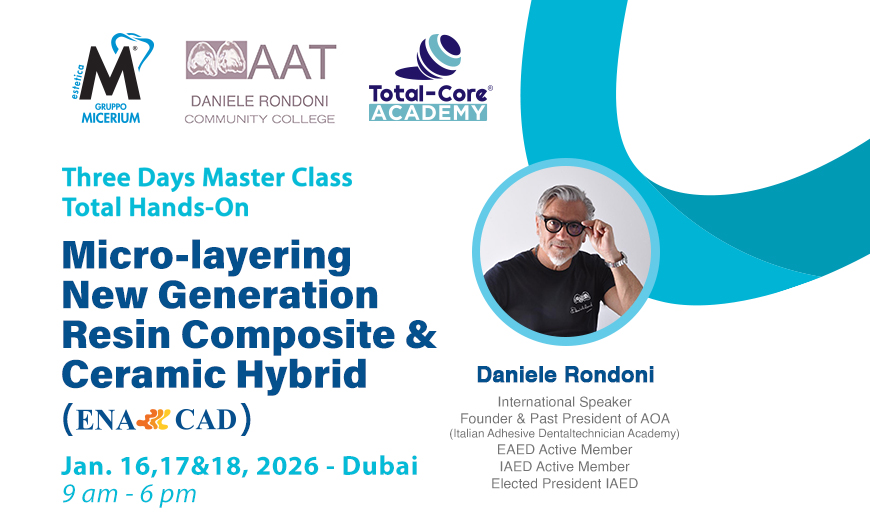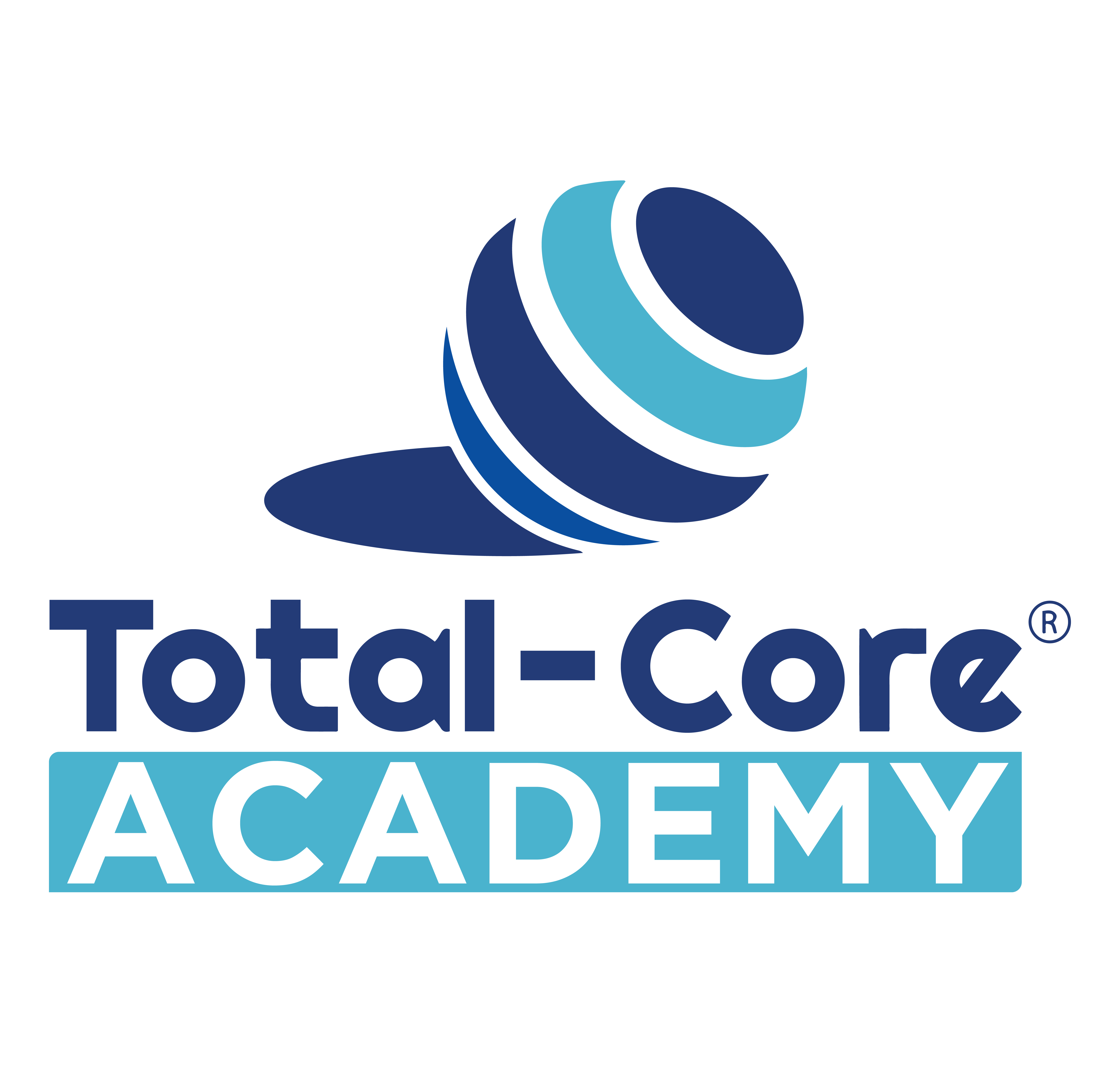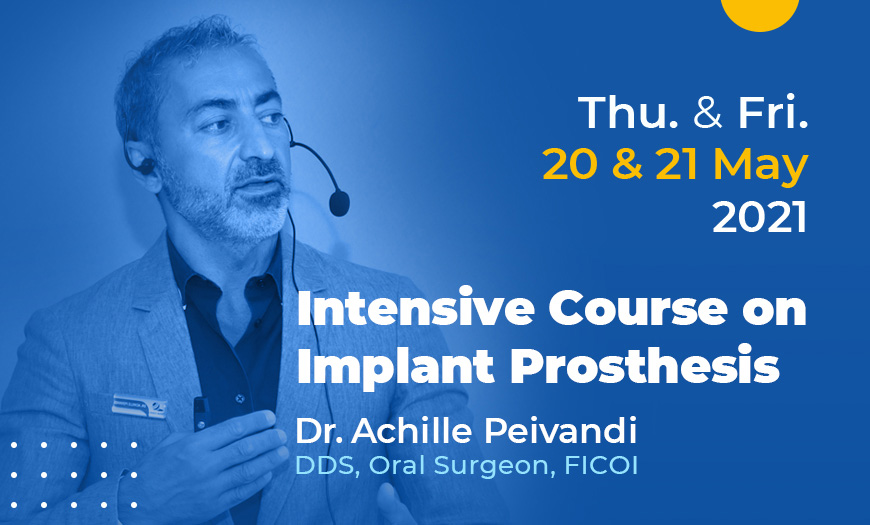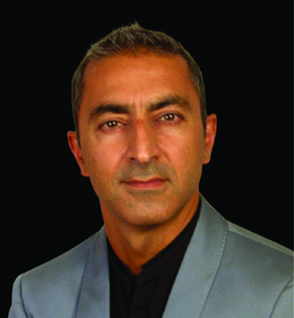- 2021-05-21 08:30:00
- Total Core Academy
INTENSIVE COURSE ON IMPLANT PROSTHESIS Expired
INTENSIVE COURSE ON IMPLANT PROSTHESIS
Intend to meet patients’ expectations and provide dental prostheses with excellent esthetics and long-term clinical performance. There are many prosthetic possibilities available, from a single missing tooth to edentulous cases, whether on teeth or implants.
This intensive prosthetic rehabilitation course is designed for clinicians who would like to offer the latest implant-based restorative dentistry. You will explore:
- The biology of hard and soft tissue
- Implant loading concepts
- Digital diagnostics and treatment planning
- CAD/CAM solutions
- Available restorative components
- Properties and esthetics of different materials
- Considerations when developing the implant site
- The importance of implant design in implant selection
If you are new to prosthetic rehabilitation, you can find in our fundamental-level courses the information and training necessary to start resorting straight forward single-implant cases.
INTENSIVE COURSE ON IMPLANT PROSTHESIS
Let’s assume that you are already experienced with single-implant restorations. In that case, you can further develop your skills by learning to identify the best materials and esthetics in more demanding single and multiple-unit restorations.
Discover CAD/CAM-produced restorative options for single- and multiple-unit fixed restorations, cement, and screw-retained restorations. Learn how to plan predictable prosthetic rehabilitation using the latest materials and digital tools.
You are welcome to bring your dental technology partner with you for this course. Dental technicians can participate individually too. During this two-day course of didactic and hands-on training, you will not only gain the knowledge on HOW to provide fixed dental implant therapies but WHEN and WHY these therapies could and should be considered.
THE SCHEDULE
Single implant restoration
Registration
08:30 – 09:00History and evolution of implant prosthesis
09:00 – 11:00One-piece implant components, parts needed for implant prosthesis
09:00 – 11:00Coffee break
11:00 – 11:30Impression taking:
Direct and indirect technics • Open and close tray impressions
11:30 – 13:00Lunch break
13:00 – 14:00Different types of implant connection and their particularity. Is there an ideal Connection?
14:00 – 11:00Occlusion taking and communication with the laboratory.
14:00 – 16:00The laboratory workflow
14:00 – 16:00Try in and delivery of the final prosthesis
14:00 – 16:00Short coffee break
16:00 – 16:15Component parts needed for implant prosthesis concerning full arch implant prosthesis
09:00 – 11:00Component parts needed for implant prosthesis concerning multiple implants
09:00 – 11:00Different types of implant components and their particularity
09:00 – 11:00History and evolution of implant prosthesis for multiple implants and full arch
Different types of implant components and their particularity
09:00 – 11:00Multiple implant restoration
Multiple implant restoration
09:00 – 11:00Coffee break
11:00 – 11:30Impression taking direct and indirect technics
11:30 – 13:00Open and close tray impressions
11:30 – 13:00Difference between cemented and screw retained prosthesis
11:30 – 13:00Occlusion taking and communication with the laboratory for multiple implants
11:30 – 13:00Occlusion taking and communication with the laboratory for full arch
11:30 – 13:00Lunch break
13:00 – 14:00The laboratory workflow
14:00 – 16:00Try-in and delivery of the final prosthesis
14:00 – 16:00Occlusion in multiple implants
14:00 – 16:00Occlusion in full arch implants
14:00 – 16:00Short coffee break
14:00 – 16:00Hands on training
• Impression taking and prosthetic part selection. • Delivery of the prosthesis
16:00 – 18:05Videos
Related Courses
Periodontal and Peri-Implant Plastic Surgery Course
Periodontal and Peri-Implant Plastic Surgery Course
Dr. Navid Sharifzadeh
DDS, MS
Periodontist, Dental Implant Surgeon, Diplomate of the American Board of Periodontology and Dental Implant Surgery
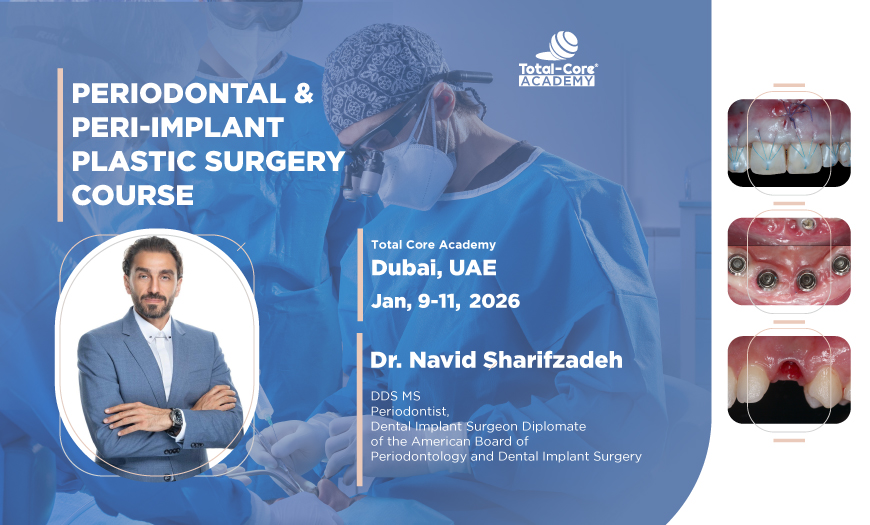
From Scan to Plan: Computer Guided Implant Surgery
Event Name: From Scan to Plan: Computer-Guided Implant Surgery
Venue: Total Core Academy
Date: (Friday & Saturday)12-13/December/2025
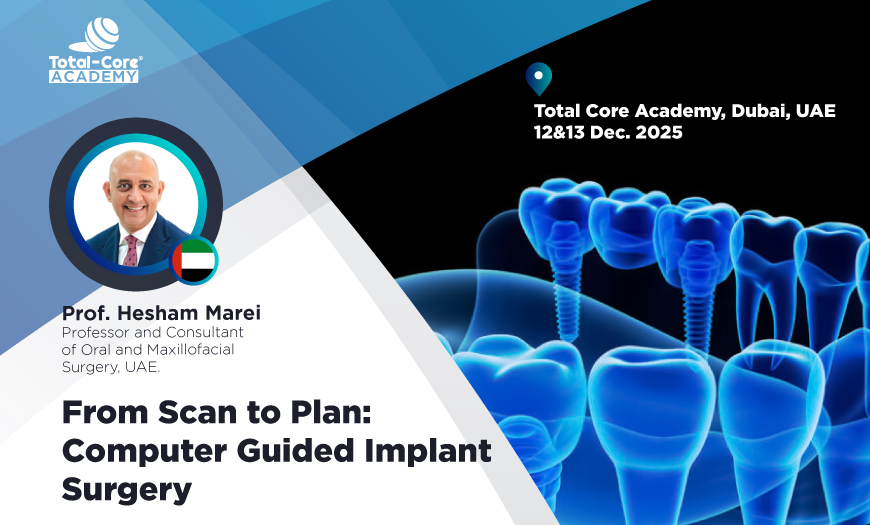
Micro-Layering New Generation Resin Composite & Ceramic Hybrid
Three Days Master Class Total Hands-On
Micro-Layering New Generation Resin Composite & Ceramic Hybrid
